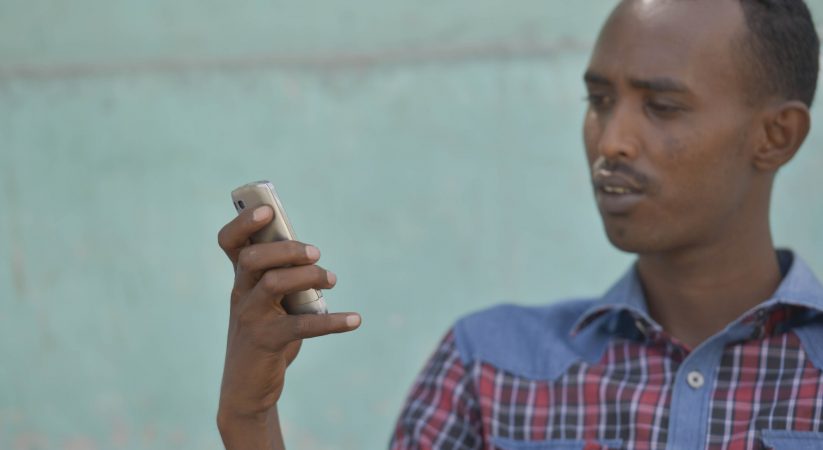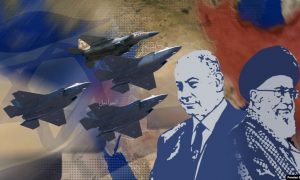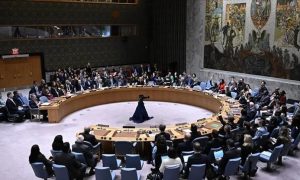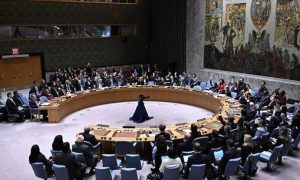
Social media, money transfers and surveillance have defined the fight against terror in East Africa –
by KEVIN KNODELL –
In early August, officials from U.S. Africa Command, the United Nations and the African Union Mission in Somalia — AMISOM — met in Djibouti for the fifth iteration of the East Africa Public Information Officer Conference.
Members of all three have been involved in efforts to defeat Islamist militant group Al Shabab as the international community tries to train the new Somali army to take the lead. This year’s conference highlighted social media’s role in that fight.
“Despite language barriers, a common regional challenge, AMISOM nations remain committed to winning the information war as social media use among East Africans continues to grow,” an AFRICOM press release stated.
Most Somalis still get their news from radio stations. But many radio journalists increasingly interact with both the government and Al Shabab online — and use social media to get official statements. And the use of cellphones and social media has seen a meteoric rise in Somalia, particularly among the country’s youth.
“What is communicated on social media is communicated directly by the radio station,” Ugandan army Capt. Jimmy Davis Omara said. “They don’t have editors to edit, so they find it easier to pick up information and read. If you can exploit that for radio, it would be an advantage.”

Al Shabab, like many jihadist groups, uses social media to send out messages to followers around the world.
The group has called upon members of the Somali diaspora to return to the country to fight first against the Ethiopian army and now against AMISOM and the new government. In particular, the group has tried to target alienated youths in the United States and the United Kingdom.
Group members and their sympathizers frequently post statements on social media taunting American and African officials’ own statements, often within minutes of official press releases or conferences.
The group also uses social media to highlight attacks. The group infamously live-tweeted its attack on Kenya’s Westgate Mall to a horrified international audience. However, while the group tried to use social media to take control of the narrative, several fake Al Shabab accounts also began tweeting out updates — several of which were false.
It showed that while social media can be a powerful tool for militants, it can also be a liability.
“The group’s use of social media has carried a major risk of losing control over messaging, as multiple sources within the movement send out their own tweets, Facebook messages and videos,” Somalia expert Ken Menkhaus wrote in The Brown Journal of World Affairs. “This has exposed the group to the danger of mixed messages, and has also meant that internal tensions and other ‘dirty laundry’ become aired in public.”
Internal disputes between senior group leaders have indeed spilled online, most embarrassingly in March 2012. Militant Omar Hammami — known for his jihadist rap persona and previously a star member of Al Shabab — released a video in which he told viewers he feared for his life after threats from other Al Shabab leaders. He later died in a bloody 2013 purge.
The internet and cellphones have also proved a liability in other ways for the group. Counterterror officials can exploit them to track militants — and then target them with commandos and drones. Al Shabaab leaders told their fighters to stop using smart phones in 2013.
Cellphones and the internet are also popular among Somalis who oppose Al Shabab and relay information to AMISOM and international counterterror officials. In January 2014, fearing local spies, Al Shabab issued an edict on Facebook banning mobile and fiber-optic internet access in areas it controls.
The area Al Shabab occupies has shrunk in recent years as AMISOM has driven the militants from major cities. The group remains dangerous, however. The militants occasionally manage to launch bloody surprise attacks on A.U. and Somali troops, as well as occasional assaults in neighboring Kenya.

Ugandan troops prepare to advance on the central Somali town of Buur-Hakba in 2013. AMISOM photo
Despite the danger, Mogadishu is more stable than it has been in many years. As ports and markets reopen, many younger Somalis have been documenting the changes with their camera phones and posting the images on social media.
Somalis have also embraced technology for business. After years of war, there are few banks in the country — but businesses and communities continue to rebuild. Digital money transfers on mobile phones have become an increasingly popular way of doing business for many Somalis.
The Somali diaspora has driven this trend, with many of the more successful Somali emigrants wiring money to relatives at home and helping them to start businesses of their own.
In 2010 Al Shabab banned mobile phone money transfers, calling them “un-Islamic.” The ban likely had less to do with religion than with finances. The group couldn’t tax digital transactions or shake down locals for cash they didn’t actually have on them.
Al Shabab — which has also banned dancing, television, cinema and soccer — is infamously averse to things it can’t directly control. In 2014, the group threatened tech and telecommunications companies across Somalia.
But Al Shabab isn’t the only institution leery of online financial transactions. In February 2015, the U.S. Department of Treasury pressured the California-based U.S. Merchants Bank to cease processing remittance payments to Somalia, on grounds that these payments might fund terrorism.
“This change prohibits Somalis living, working or going to school in the United States from sending desperately needed funds to their families in the beleaguered and troubled East African country,” former Green Beret Derek Gannon wrote in an op-ed for the military news website SOFREP criticizing the policy.
However, if the past decades of war, famine and strife have demonstrated anything, it’s that Somalis are resourceful and resilient. For better or worse — and terror, counterterror and reconstruction — they’ve embraced the information age.
.
.
.
.
__________________________
_____________________________________________________________________________________
Xafiiska Wararka Qaranimo Online | Mogadishu, Somalia
_____________________________________________________________________________________Advertisement
_____________________________________________________________________________________







